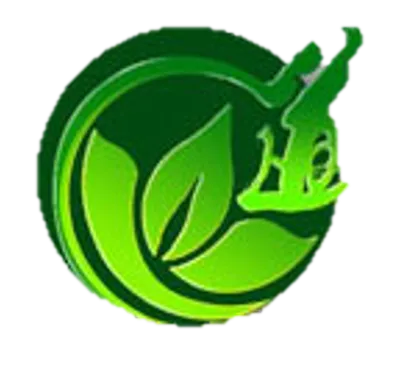Tic Disorders:
Provisional Tic Disorder
Persistent (Chronic) Motor or Vocal Tic Disorder
Tourette Syndrome (TS)
What Is the Full Name of Tic Disorder?
“Tic Disorders” is the full medical term used to describe a group of conditions that involve sudden, rapid, repetitive movements or vocal sounds, called tics. These are involuntary and often increase with stress or excitement.Tic disorders are officially classified into three main types:
Provisional Tic Disorder
This is diagnosed when tics have been present for less than one year.It often appears in children and may go away on its own.
Persistent (Chronic) Motor or Vocal Tic Disorder
This is diagnosed when a person has either motor tics (such as blinking or jerking) or vocal tics (like throat clearing or grunting) for more than one year, but not both.
Tourette Syndrome (TS)
This is the most well-known and more complex type.It involves both motor and vocal tics, lasting more than one year, usually starting in childhood or early adolescence.Tics may come and go, change in type or intensity, and often peak around age 10–12.
Although tics may look unusual or disruptive, they are not done on purpose—and many children eventually improve as they grow older.
Understanding the type of tic disorder is the first step to providing the right treatment and support.
Understanding Tic Disorders: A Western and Chinese Medicine Perspective Tic disorders are neurological conditions characterized by sudden, repetitive, involuntary movements or vocalizations, known as tics. These can range from simple eye blinking or throat clearing to more complex motions or phrases. Common types include:
Transient tic disorder Chronic motor or vocal tic disorder Tourette Syndrome, the most well-known, involving both motor and vocal tics for more than a year
Tics often begin in childhood, and while many children outgrow them, others experience persistent or worsening symptoms that can impact social, academic, and emotional wellbeing.
Western Medical View
In Western medicine, tic disorders are seen as neurodevelopmental, possibly involving abnormalities in the basal ganglia and dopamine regulation. Genetics, environmental triggers, and psychological stress all play contributing roles. Treatment may include:
Behavioral therapies like CBIT (Comprehensive Behavioral Intervention for Tics)Medications targeting dopamine, such as antipsychotics
Stress management and supportive therapies
However, some treatments carry side effects or may not provide long-term resolution. This is where Traditional Chinese Medicine (TCM) offers a gentler, individualized, and root-focused alternative.
How Chinese Medicine Understands Tic Disorders
In TCM, tic disorders are seen as a manifestation of internal wind, disturbing the smooth flow of Qi and affecting the communication between the body and the Shen (spirit/mind). Several patterns may be involved:
1. Liver Wind Stirring Internally
Often due to Liver Yang Rising or Yin deficiency, this pattern creates tremors, spasms, and sudden movements. It is worsened by emotional stress or overstimulation.
2. Phlegm Obstructing the Meridians and Orifices
If the Spleen is weak (especially due to poor diet or overthinking), it may produce Phlegm that blocks the channels to the brain, leading to jerky or repetitive actions and difficulty focusing.
3. Heart and Liver Fire Disturbing the Shen
This excess heat disturbs the mind, causing irritability, impulsivity, sleep disturbance, and more intense tics, especially during emotional flare-ups.
4. Kidney Deficiency Failing to Anchor the Yang
In chronic cases or when the child is constitutionally weak, the Kidneys may lack the strength to stabilize movement and mind, leading to fatigue, poor concentration, and worsening tics.
How TCM Treats Tic Disorders
1. Acupuncture
Acupuncture calms internal Wind, clears Heat, nourishes Yin, and stabilizes the Shen. Treatment is customized according to the patient’s constitution and current symptoms. It helps regulate the nervous system and reduce tic frequency and intensity.
2. Herbal Medicine
Tailored herbal formulas aim to subdue Liver Wind, dissolve Phlegm, calm the Shen, and tonify deficiencies. Herbs are safe, well-tolerated, and supportive for long-term healing—especially in children.
3. Pediatric Tui Na (Massage)
For younger patients, gentle massage techniques help regulate the organs, calm the nervous system, and reduce hyperactivity and tics
.4. Diet & Lifestyle Guidance
In TCM, diet, sleep, and emotional rhythm play critical roles. Reducing sugary, greasy, and inflammatory foods while creating a calm and structured daily routine can significantly improve symptoms.5. Integrating ZiQia Self-Consistent Medicine
At our clinic, we apply Dr. Pan Xiaochuan’s ZiQia System, focusing on pulse diagnosis and restoring constitutional balance. This system is particularly effective for chronic neurological and behavioral conditions, offering a clear path toward integration of body, mind, and environment.
A Personalized, Gentle Path to Healing
Tic disorders may be unpredictable and distressing, but they do not define a child—or their future. Chinese medicine offers a compassionate, root-level approach, supporting the body’s ability to heal itself over time. By treating each person as a whole—not just a diagnosis—we help restore calm, control, and confidence.
